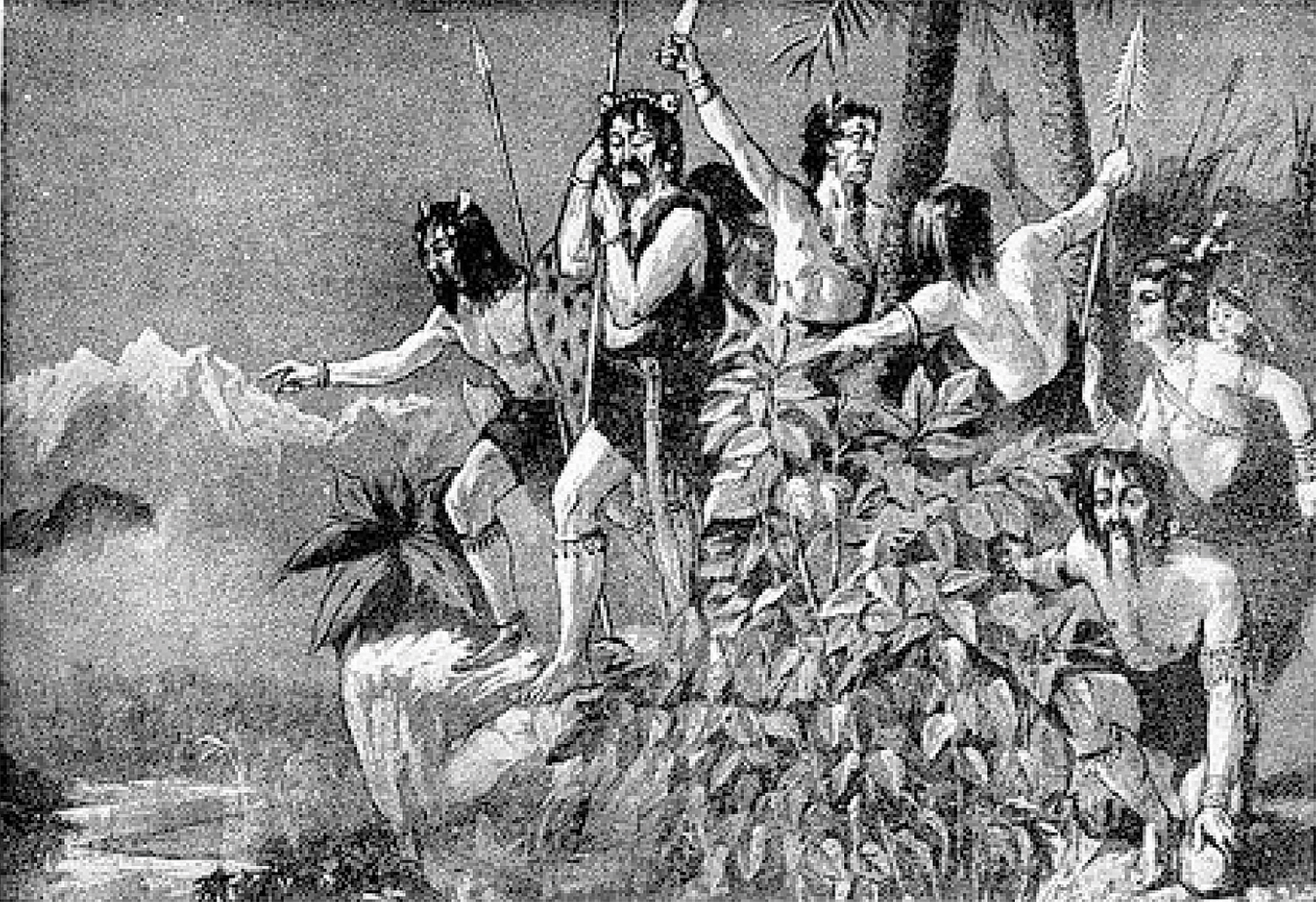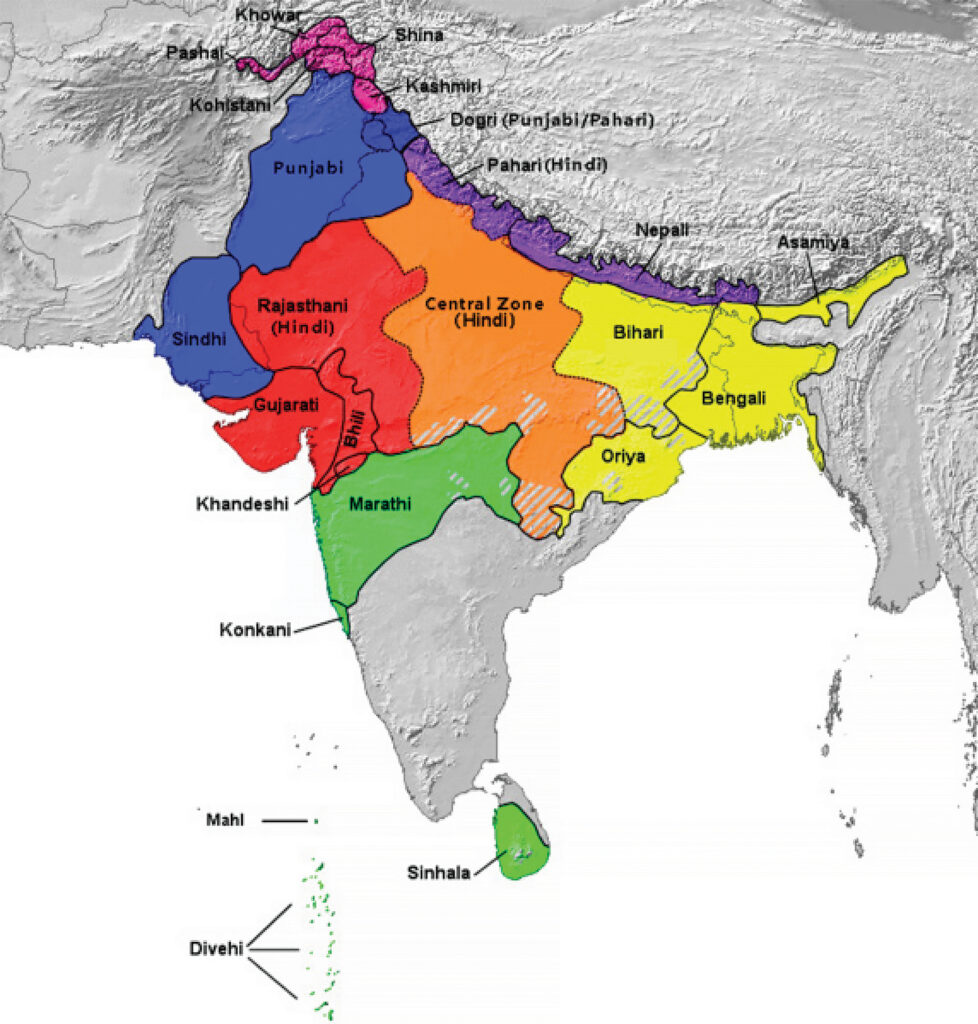Where Did the Aryans Come From?
By Misbahuddin Mirza
May/Jun 2024

Recent genetic research confirms earlier anthropologic studies that Aryans from the Central Asian Steppes migrated both into the Indian subcontinent as well as to various parts of Europe after 2000 B.C. (“How genetics is settling the Aryan migration debate,” June 16, 2017, https://www.thehindu.com; “How ancient DNA may rewrite prehistory in India,” Tony Joseph, BBC, Dec. 30, 2018). The first group, bringing their Indo-Aryan Sanskrit language and Vedic religious texts, violently pushed the native Dravidians southward and imposed their rigid Brahmanical Hindu religious caste system. This long-held view of the “Aryan invasion,” was never an issue in Europe or in India, West Pakistan and East Pakistan (the future Bangladesh), all of which obtained independence from the British at the same time in 1947. Then why is it such a contentious issue for India’s ruling right-wing BJP party and its Hindutva parent organization, the Rastriya Swayam Sevak Sangh (RSS)?
During India’s freedom struggle, Vinayak Savarkar (1883-1966) and Madhav Golwalkar (1906-1973) created “Hindutva,” an ideology of hatred, a radical ideology that should not be confused with “Hindu” or “Hinduism,” which is a religion. According to Hindutva, Muslims are invaders and India belongs only to the land’s original natives. Savarkar defines “native,” or “true Indian,” one has to satisfy two conditions: (1) India is his/her pitribhumi (ancestral land) and (2) India should be his/her punyabhumi (land of his/her religion). Golwalkar, an avid Hitler supporter, stated, “Hindus came into this land from nowhere, but are indigenous children of this soil always from time immemorial,” and that this race “is by far the important ingredient of a nation.” Renowned historian Romila Thapar explains this Hindutva mindset as “a Hindu therefore could not be descended from alien invaders…. Since Hindus sought a lineal descent from the Aryans, and a cultural heritage, the Aryans had to be indigenous.”
For decades, Hindutva ideologies dismissed all anthropologic studies supporting the Aryan invasion as an invention of the British colonialists to justify their own invasion of India. This is important, because if Central Asian Aryan invaders brought the Brahmanical Hindu religion into India, then the Hindutva adherents claim that India is the Hindus’ pitribhumi and punyabhumi have been a massive hoax. By extension, it would also mean that they should now stop labeling their fellow Indian Muslims as “invaders,” as they themselves would be considered as “invaders”’ who just happened to arrive earlier.
As genetic research results started trickling in, Hindutva started to modify their position slightly by stating that the Aryans originated in India and later spread to Europe and Central Asia along with their Indo-Aryan languages. A few Hindutva proponents tried to spin the scientific studies by saying that the Aryans’ migration into India was peaceful and resulted in their eventual assimilation with the native Dravidians.
Latest Studies
The latest, extensive genetic studies, however, have proved that not only did Aryans migrate into the Indian sub-continent, but that their encounter with the local Dravidians was extremely violent. Daniyal writes since most of the Steppe DNA is male, it means that Steppe migrants “were more successful at competing for local mates than men from the local groups,” indicating the aggressive nature of Indo-Aryan migration. In David Reich’s words, this means that this encounter “cannot have been entirely friendly.” In western Europe, these Steppe people completely displaced local males, very quickly indicating a possible genocide against the native population. (“Two new genetic studies upheld Indo-Aryan migration. So why did the Indian media report the opposite?” Shoaib Daniyal, Sept. 12, 2019, https://scroll.in/).

Renowned American geneticist Razib Khan states, “The recent arrival of steppe pastoralists from the steppe bearing R1a1a-Z93 into the highland zone to the north and west of the Indian subcontinent in the period after 2000 BC now seems assured. The few samples we do have from the mature-phase IVC [Indus Valley Civilization] indicate that this ancestry was absent in South Asia during this period. We also see today that steppe ancestry is present at much higher fractions among upper castes, and in groups in the north of India and in Pakistan. All this evidence strongly points to the arrival of a group of pastoralist Indo-European speakers to South Asia in the period after 2000 BCE. We know these pastoralists were Indo-European speakers, because literate civilization persisted continuously in the Near East, and Indo-Aryans are attested in the historical record from Mesopotamia in the first half of the second millennium BCE” (“Which of us are Aryans,” Thapar, Romila, et al., 2019).
Writing for Smithsonian.com, Brian Handwerk states, “Indo-European languages may have reached South Asia via Central Asia and Eastern Europe during the first half of the 1000s B.C.” (Sept. 5, 2019). Zhang notes that Steppe people “brought horses and the Indo-European languages now spoken on the subcontinent” (“A Burst of Clues to South Asians’ Genetic Ancestry,” Sarah Zhang, The Atlantic, Sept. 5, 2019).
Swaminathan A Aiyar, in his scholarly article “What science tells us about Hindu majoritarianism,” explains, “India is not a country of original Aryan Hindus invaded by Muslims, as portrayed by some RSS historians. Primitive ape-like proto-humans lived in India over 100,000 years ago. But the land’s first Homo sapiens came from Africa 65,000 years ago and spread gradually. The proto-humans lost ground and eventually became extinct. Another out-of-Africa branch that had settled in the Zagros Mountains of Iran entered India 7,000 years ago. It brought agricultural techniques that helped create the great Harappan civilization. This developed major cities, the Indus Valley script and Dravidian languages” (The Economic Times, April 24, 2019)
And yet diehard Hindutva proponents like Vasant Shinde (former professor and vice-chancellor, Deccan College, Deemed University, Pune, India) continue his baseless arguments, despite condemnations by experts such as Razib Khan, Nick Patterson and David Reich. Writing in the scroll.in, Shoaib Daniyal described the difficulties faced by Reich, “This inquiry into the origin of modern Indians has set off hectic political debate in India. David Reich recounted how politics played a part in his work. Given the significant Steppe ancestry in the Ancestral North Indian component, Reich had originally termed this group ‘West Eurasians’ — a move that received violent pushback from Reich’s Indian collaborators, who controlled the access to genetic material. Reich recounts these discussions as the ‘tensest 24 hours of my scientific career’ and ‘At the time I felt that we were being prevented by political considerations from revealing what we had found,’ he complained” (“Two new genetic studies upheld Indo-Aryan migration. So why did the Indian media report the opposite?” Sept. 12, 2019).
It’s time for the world to unite and demand that India outlaw this outrageous and outlandish anti-Muslim ideology of hatred and treat Indian Muslims as equal citizens.
Misbahuddin Mirza, M.S., P.E., is a licensed professional engineer, registered in the States of New York and New Jersey. He served as the regional quality control engineer for the New York State Department of Transportation’s New York City Region, authored the iBook “Illustrated Muslim Travel Guide to Jerusalem” and has written for major U.S. and Indian publications.
Tell us what you thought by joining our Facebook community. You can also send comments and story pitches to [email protected]. Islamic Horizons does not publish unsolicited material.
